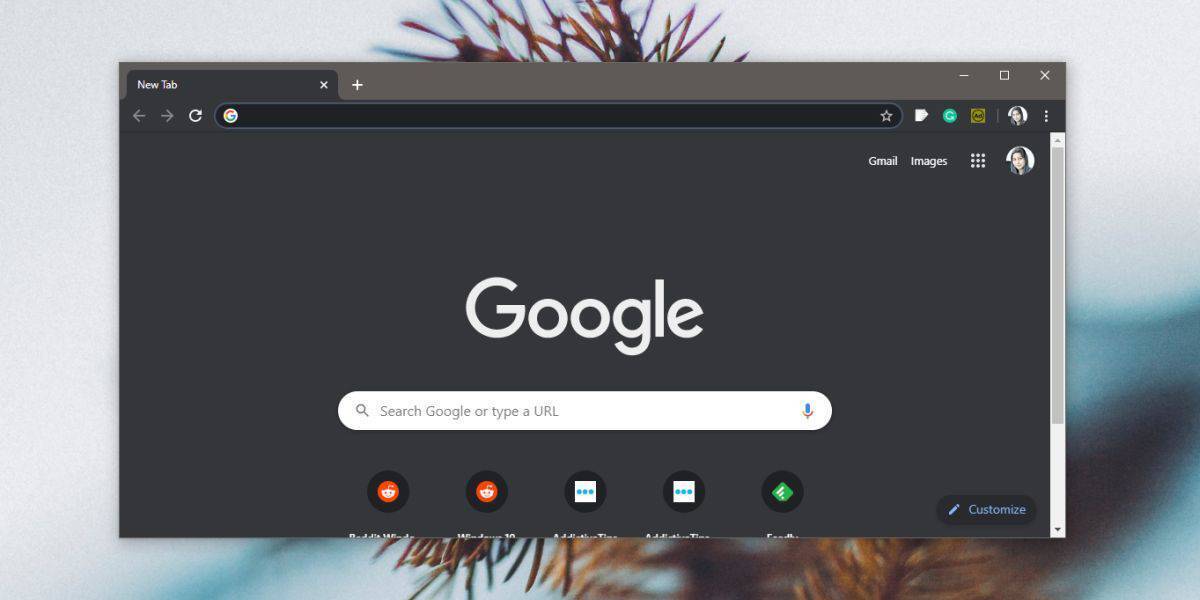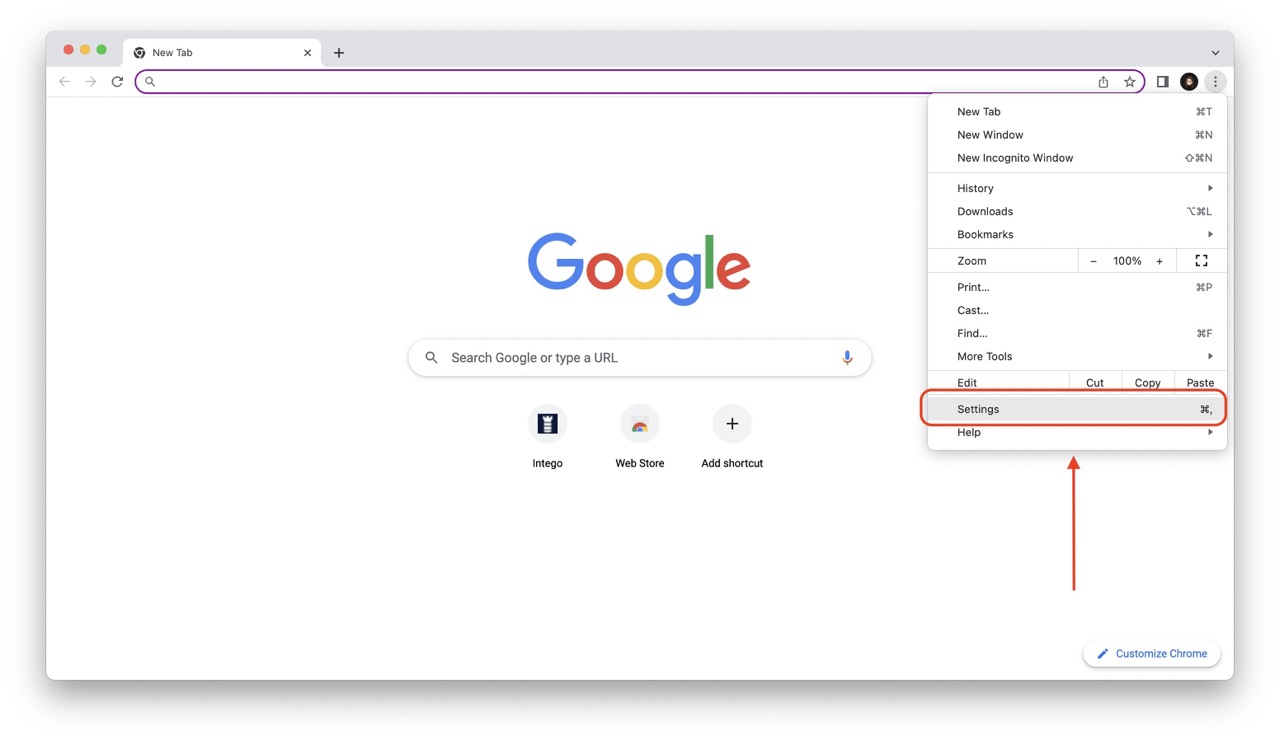Introduction
When it comes to web browsing, Google Chrome stands out as one of the most popular and versatile browsers available. Its user-friendly interface and extensive range of features make it a top choice for millions of users worldwide. One such feature that enhances the browsing experience is the ability to pin tabs in Chrome.
Pinning tabs offers a convenient way to keep frequently visited websites readily accessible, streamlining navigation and reducing clutter in the tab bar. By pinning a tab, you can ensure that important websites remain open and easily identifiable, even when numerous tabs are in use. This feature is particularly beneficial for individuals who regularly access specific websites, such as email clients, social media platforms, or productivity tools.
In this article, we will delve into the details of pinning tabs in Chrome, exploring the process of pinning and managing tabs to optimize your browsing experience. Whether you're a seasoned Chrome user or new to the browser, mastering the art of pinning tabs can significantly enhance your productivity and efficiency while navigating the web. So, let's embark on this journey to uncover the ins and outs of pinning tabs in Chrome, empowering you to make the most of this valuable feature.
What are pinned tabs in Chrome?
Pinned tabs in Chrome are a nifty feature designed to streamline and optimize the browsing experience. When you pin a tab in Chrome, you essentially condense it into a smaller, more manageable form. This involves reducing the tab to display only the site's favicon, which is the small icon representing the website, and removing the close button. By doing so, pinned tabs take up minimal space on the tab bar, allowing for a cleaner and more organized browsing interface.
One of the primary benefits of using pinned tabs is the ability to keep essential websites readily accessible. Whether it's your email inbox, a project management tool, or a news website you frequently visit, pinning tabs ensures that these sites remain open and easily identifiable, even when numerous tabs are in use. This can significantly enhance productivity by eliminating the need to search through a cluttered tab bar for specific websites.
Furthermore, pinned tabs are immune to accidental closure. Since the close button is removed from pinned tabs, you won't inadvertently shut down a crucial website when closing multiple tabs. This feature provides peace of mind, especially when working with a multitude of open tabs, as it prevents the accidental loss of important webpages.
Additionally, pinned tabs remain in place even when opening a new window or restarting the browser. This consistency ensures that your essential websites are always at your fingertips, saving time and effort that would otherwise be spent reopening them.
In essence, pinned tabs in Chrome offer a practical and efficient way to manage frequently accessed websites, declutter the tab bar, and prevent accidental closures. By leveraging this feature, users can customize their browsing environment to suit their specific needs, ultimately enhancing their overall web navigation experience.
How to pin tabs in Chrome
Pinning tabs in Chrome is a straightforward process that can be accomplished in just a few simple steps. Whether you're using Chrome on a desktop or laptop, the method for pinning tabs remains consistent across different devices. Here's a comprehensive guide on how to pin tabs in Chrome:
-
Open Chrome: Launch the Chrome browser on your device by clicking on the Chrome icon in your desktop or laptop's taskbar, or by searching for Chrome in your applications and opening it.
-
Navigate to the Website: Once Chrome is open, navigate to the website that you want to pin. This could be a frequently visited website such as your email inbox, a news site, or any other webpage that you want to keep readily accessible.
-
Right-click on the Tab: After the website has loaded, locate the tab representing the webpage you want to pin. Right-click on the tab to reveal a dropdown menu of options.
-
Select "Pin Tab": From the dropdown menu, select the "Pin Tab" option. Upon selecting this option, the tab will condense into a smaller size, displaying only the site's favicon and removing the close button.
-
Verify the Pinned Tab: Once you've pinned the tab, you'll notice that it has moved to the leftmost position on the tab bar and appears as a smaller, favicon-only tab. This signifies that the tab has been successfully pinned.
Congratulations! You have successfully pinned a tab in Chrome. The pinned tab will now remain open and easily accessible, even when you have multiple tabs open. This allows you to keep your frequently visited websites organized and readily available for quick access.
By following these simple steps, you can leverage the power of pinned tabs to streamline your browsing experience and ensure that your essential websites are always within reach whenever you open Chrome. Whether it's for work, leisure, or staying updated with the latest news, pinning tabs in Chrome offers a convenient way to optimize your web navigation and boost your productivity.
So, go ahead and start pinning your most visited websites in Chrome to enjoy a more organized and efficient browsing experience!
Managing pinned tabs in Chrome
Once you've pinned tabs in Chrome, it's essential to understand how to manage them effectively to make the most of this feature. Managing pinned tabs involves organizing, rearranging, unpinning, and utilizing them to enhance your browsing experience. Here's a detailed guide on managing pinned tabs in Chrome:
Rearranging Pinned Tabs
To rearrange your pinned tabs, simply click and drag them to your preferred position on the tab bar. This allows you to prioritize the order in which your pinned tabs are displayed, ensuring quick access to the most important websites.
Unpinning Tabs
If you no longer need a tab to be pinned, you can easily unpin it. To do this, right-click on the pinned tab and select the "Unpin Tab" option from the dropdown menu. The tab will revert to its standard size and regain the close button, allowing you to manage it like any other regular tab.
Opening Links in New Tabs
When browsing with pinned tabs, you may encounter links that you want to open in a new tab. To do this, simply hold down the Ctrl key (Cmd on Mac) while clicking the link. This action opens the linked page in a new tab while keeping your pinned tabs intact.
Utilizing Pinned Tabs for Productivity
Pinned tabs can be leveraged to enhance productivity by keeping essential tools and resources readily accessible. For example, you can pin tabs for your email inbox, project management platform, calendar, or any other web-based tools you frequently use. This ensures that these resources are always just a click away, streamlining your workflow and saving time.
Grouping Pinned Tabs
If you have multiple related websites that you frequently visit, consider grouping them together as pinned tabs. This can be particularly useful for organizing tabs related to work projects, hobbies, or specific interests. Grouping tabs allows for a more structured and efficient browsing experience.
Clearing Pinned Tabs
Occasionally, it's beneficial to clear out pinned tabs that are no longer relevant or necessary. Regularly reviewing and decluttering your pinned tabs ensures that you maintain a streamlined and organized browsing environment.
By mastering the art of managing pinned tabs in Chrome, you can tailor your browsing experience to suit your specific needs, enhancing efficiency and productivity. Whether it's organizing tabs, unpinning those no longer needed, or leveraging pinned tabs for quick access to essential resources, effective management of pinned tabs can significantly optimize your web navigation experience.
Conclusion
In conclusion, the ability to pin tabs in Chrome offers a myriad of benefits that can significantly enhance the browsing experience for users. By condensing frequently visited websites into smaller, easily accessible tabs, users can streamline their navigation, reduce clutter, and ensure that essential webpages remain readily available. The convenience of pinned tabs extends to preventing accidental closures, maintaining consistency across browser sessions, and facilitating quick access to vital resources.
As we've explored the process of pinning tabs in Chrome, it's evident that this feature empowers users to customize their browsing environment according to their specific needs. Whether it's for work, leisure, or staying informed, pinned tabs provide a practical solution for keeping important websites at the forefront of the browsing interface.
Furthermore, the management of pinned tabs allows for personalized organization and optimization of the browsing experience. From rearranging tabs to unpinning those no longer needed, users can tailor their tab bar to reflect their priorities and streamline their workflow. Leveraging pinned tabs for productivity, grouping related websites, and periodically clearing out unnecessary tabs are strategies that can further enhance the efficiency and effectiveness of this feature.
Ultimately, mastering the art of pinning and managing tabs in Chrome empowers users to take control of their browsing experience, maximizing productivity and convenience. By integrating pinned tabs into their daily web navigation, users can enjoy a more organized, efficient, and personalized browsing experience that aligns with their unique preferences and requirements.
In essence, the ability to pin tabs in Chrome represents a valuable tool for optimizing web navigation, enhancing productivity, and maintaining easy access to essential websites. As users continue to explore the diverse functionalities of Chrome, incorporating pinned tabs into their browsing routine can undoubtedly elevate their overall web browsing experience. So, whether it's for work, study, or leisurely browsing, embracing the power of pinned tabs in Chrome can revolutionize the way users interact with their favorite websites and online resources.
























